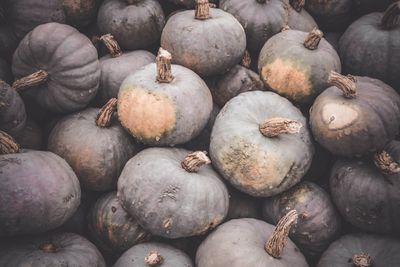What is a Blue Hokkaido Squash?
Blue Hokkaido, also referred to as Blue Kuri squash, is an open pollinated Japanese Kabocha type of squash that has a much longer shelf life than other types of Kabocha. Typical of Kabocha squash, Blue Hokkaido squash (Curcurbita maxima) has a flattened globe shape with as its name suggests, a blue-grey color.
Additional Blue Hokkaido Info
The golden flesh of Blue Kuri is sweet and can be used in dessert recipes as well as in savory/sweet side dishes. It tends to be on the dry side; however, after being stored for a few months it will become moister. Blue Hokkaido squash vines require plenty of room to grow and can be expected to produce three to eight squash per plant. The average weight is between 3to 5 pounds (1-2 kg.), although they may grow and weigh up to 10 pounds (4.5 kg.). The gorgeous blue-grey squash, or pumpkin as some refer to it, also looks beautiful as a centerpiece carved or uncarved, alone, or in combination with other squash, pumpkins, and gourds.
Growing Blue Hokkaido Squash
Sow seed indoors from May to June or directly into the garden in fertile, well-drained soil after all chance of frost has passed. Sow seeds to a depth of one inch (2.5 cm). Seeds will germinate in five to ten days. Once the seedlings have two true sets of leaves, transplant them into a sunny area of the garden in rows that are 3 to 6 feet (1-2 m.) apart. The squash should be ready to harvest around 90 days from planting. Allow the squash to cure for a few days in the sun before storing. This squash will store for several months, even up to a year.
